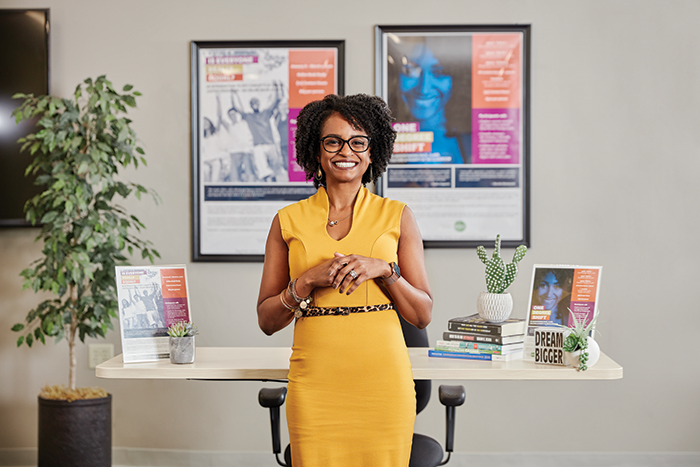In her work as an educational consultant, Katrice Quitter supports educators, schools, districts and nonprofit institutions. She describes her work as helping people envision what diversity, equity, inclusion and belonging practices look like in action by making a one-degree shift in what we do each day. “Beyond putting it in our mission and vision statements,” she asks, “what does it look like as we create and maintain spaces that are equitable and inclusive for everyone?”
Teaching Tolerance sat down with Quitter to learn more.
What do you wish folks better understood about diversity, equity and inclusion?
These terms are often used synonymously, but they are uniquely different and important. Because we have diversity, that doesn’t mean that we’re culturally responsive. Because we have diversity, that doesn’t mean that we’re equitable, nor does it mean that we’re inclusive. ...
A lot of times when it comes to culture, we think about things that are just visible. We think about observable behaviors such as holidays and food and music and how people dress. And one of the things that [Zaretta Hammond] talks about in her book [Culturally Responsive Teaching and the Brain] is that culture is the way that our brains make sense of the world around us. When something at that very surface level isn’t static, it changes or shifts over time—it doesn’t really cause a large emotional impact on our trust. You know, most people can kind of adjust. ... But there’s a lot of things that are way below the surface, that fall into shallow or deep culture, and that are going to influence the way in which I interact with people on a daily basis.
And this shows up often in schools, especially as we think about respect, perceived disrespect, relationships, beliefs about fairness, collectivism versus individualism, how people prefer to work and what they see as success. That really defines a lot of what we do in our environments. And if we don’t provide space of belonging for all of that—for a student, family or colleague—you feel like a piece of you is erased, or you have to hide, or a piece of you is tucked away, that it doesn’t belong.
How can educators better provide that space for belonging?
Be intentional and authentic in recognizing and celebrating the differences that exist in my environment. ...
Even thinking about how we communicate home to caregivers and families and just adjusting our language to be more inclusive in the communication that comes from school to home. Consider family structure, home language and how we are communicating. Not everyone has parents at home. We’ve got various family structures, so it could be grandparents, it could be foster care, it could be an older sibling. ...
Do we typically always offer engagement opportunities in the evening? And what does that mean? If I have families that work in the evening, that doesn’t mean that they don’t want to be a part of their child’s educational process. It means the time in which we typically do things doesn’t work for that family. So how can I be intentional about creating space for someone that might work second shift or third shift, not always expecting them to come to us? ...
This is my life. I live this work; my family and my friends know it. ... I’ve got two kids, and last time we had to update forms [at the doctor’s office], we had to give their names, their ages, and then it asked about race.
There were options listed. But my kids are multiracial, and they didn’t fit into any of the boxes on the form. And I asked the person up front, “Who do I need to talk to [for you] to get this form changed?” And she said, “Well, what’s wrong with it?”
Her quick response was to just “write in multiracial,” even though it wasn’t an option to choose from. If I didn’t know to ask about changing the form, I could have just listed one or the other and moved on, but that doesn’t accurately represent my kids and their identity. ...
It’s simple things like that, that if it’s not your lived experience, you don’t know to look for those things. But when someone educates you or empowers you to think about diversity, equity and inclusion in a different way, you then walk into those situations and have the ability to not only be an ally, but to be an accomplice. ...
How do we empower folks to be an accomplice? How do we help people understand what it means to use their power and privilege to speak up on behalf of marginalized groups and why that might be uncomfortable? We need everyone to lean into discomfort. Initially, I described it as like building a muscle: It’s kind of like an equity personal trainer. The more you do it, the easier it gets. And then other people see you changing systems to be more equitable and inclusive. And they become inspired by the work that you’re doing and then may want to join, too. They want to be a part of it.
Katrice Quitter is an educational consultant with the Hamilton County Educational Service Center in Cincinnati, Ohio.
Know an excellent administrator, librarian or counselor we should interview?
Tell us all about them.


0 COMMENTS